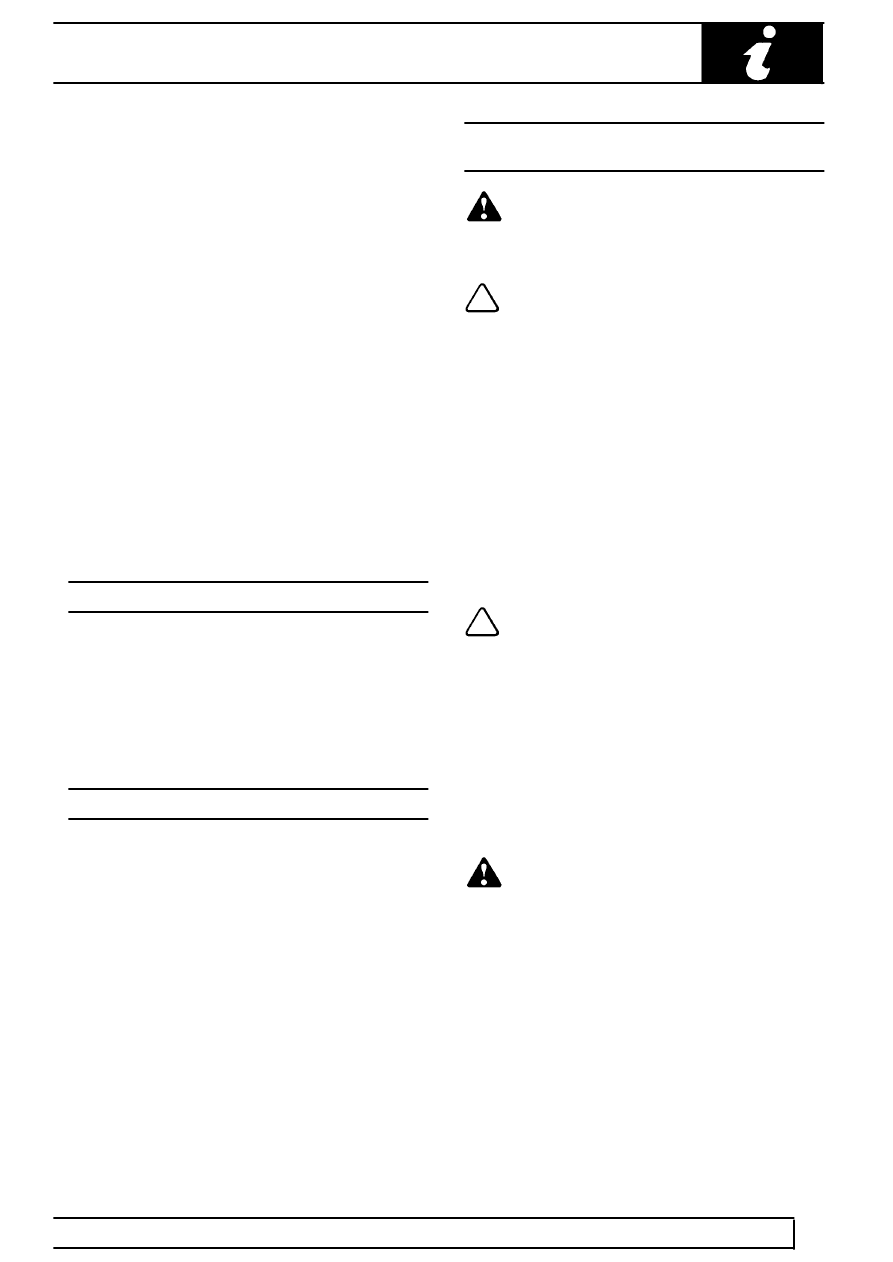Range Rover P38

INTRODUCTION
7
INFORMATION
2. Raise front road wheels to enable an axle stand
to be installed under left hand axle tube.
3. Position an axle stand under right hand axle
tube, carefully lower jack until axle sits securely
on both axle stands, remove trolley jack.
4. Before commencing work on underside of
vehicle re-check security of vehicle on stands.
5. Reverse procedure when removing vehicle from
stands.
Raise rear of vehicle
1. Position cup of hydraulic arm under differential
casing.
2. Raise vehicle to enable axle stands to be
installed under left and right hand axle tubes.
3. Lower jack until axle sits securely on axle
stands, remove trolley jack.
4. Before commencing work on underside of
vehicle re-check security of vehicle on stands.
5. Reverse procedure when removing vehicle from
stands.
HYDRAULIC VEHICLE RAMP (FOUR POST)
Use only a ’drive on’ type ramp which supports vehicle
by its own road wheels. If a ’wheel-free’ condition is
required, use a ’drive on’ ramp incorporating a
’wheel-free’ system that supports under axle casings.
Alternatively, place vehicle on a firm, flat floor and
support on axle stands.
TWO POST VEHICLE RAMPS
The manufacturer of RANGE ROVER VEHICLES
DOES NOT recommend using ’Two Post’ ramps
that employ four adjustable support arms. These
are NOT considered safe for Range Rover
vehicles.
If a vehicle is installed on a Two Post ramp,
responsibility for safety of the vehicle and
personnel performing service operations is
attributable to the Service Provider.
DYNAMOMETER TESTING - VEHICLES WITH
ANTI-LOCK BRAKES (ABS)
WARNING: Do not attempt to test ABS
function on a dynamometer
Four wheel dynamometers
NOTE: Before testing a vehicle on a four
wheel dynamometer disconnect the valve
relay.
See Electrical Trouble Shooting
Manual.
The ABS function will not work, the ABS warning
light will illuminate. Normal braking will be
available.
Provided that front and rear rollers are rotating at
identical speeds and that normal workshop safety
standards are applied, there is no speed restriction
during testing except any that may apply to the tyres.
Two wheel dynamometers
IMPORTANT: Use a four wheel dynamometer for
brake testing if possible.
NOTE: ABS will not function on a two
wheel dynamometer. The ABS light will
illuminate during testing. Normal braking
will be available.
If brake testing on a single rig is necessary it must be
carried out with propeller shaft to the rear axle
removed, AND neutral selected in BOTH main and
transfer boxes.
If checking engine performance, the transfer box must
be in high range and drive shaft to stationary axle
removed.
WARNING: Vehicles from 99 MY are fitted
with 4 wheel traction control, which must
be disabled prior to testing on a single
axle dynamometer.
